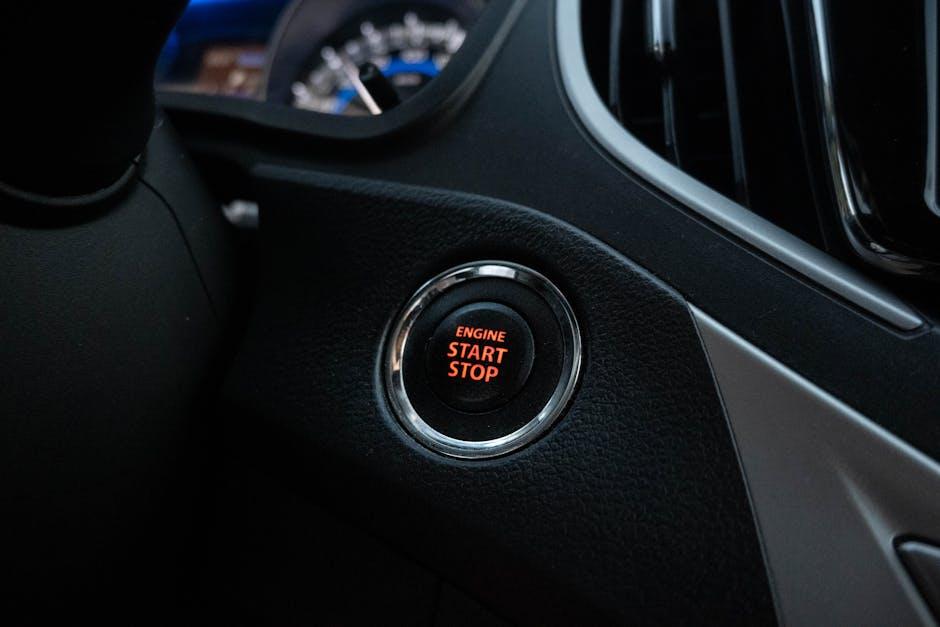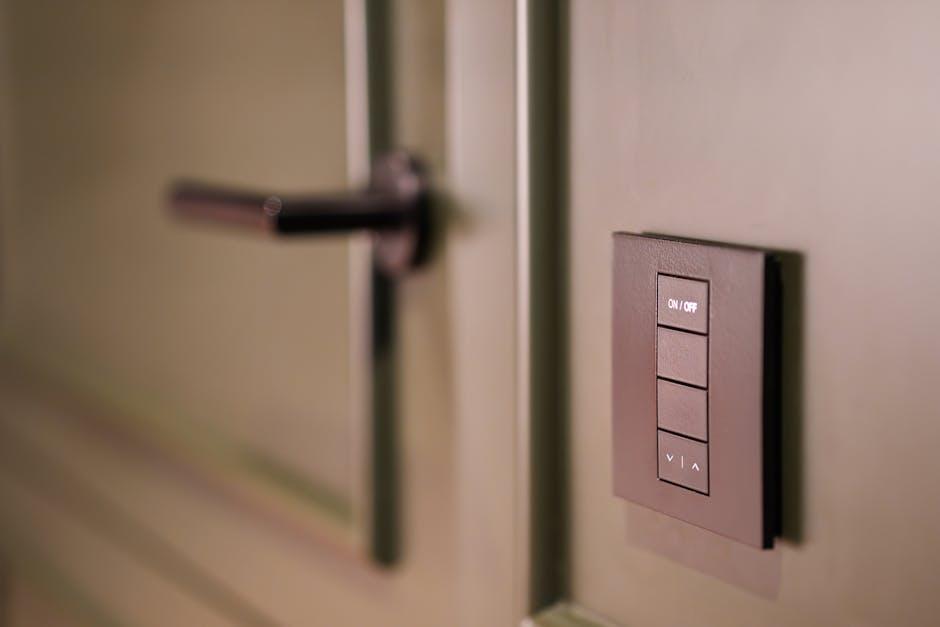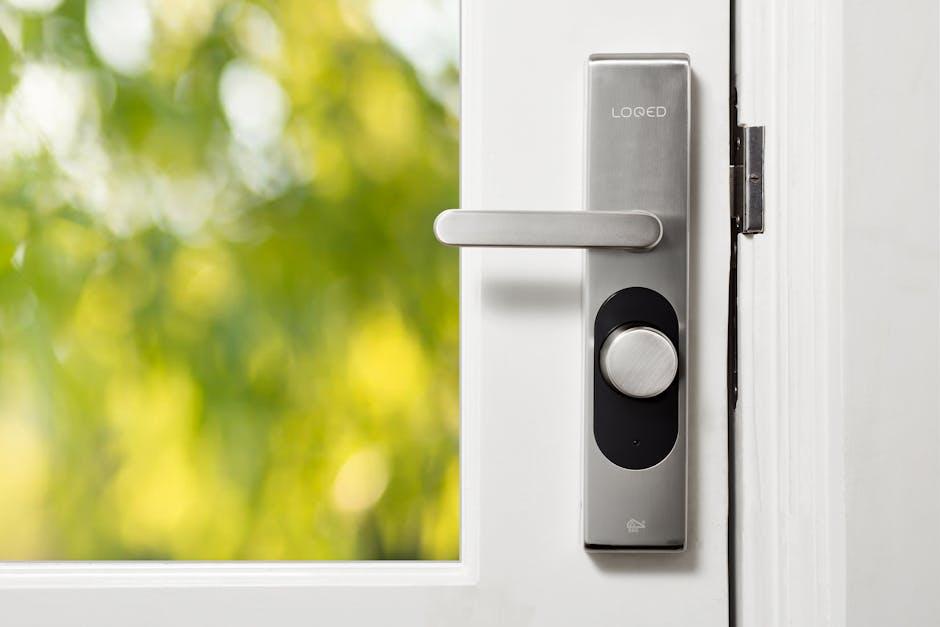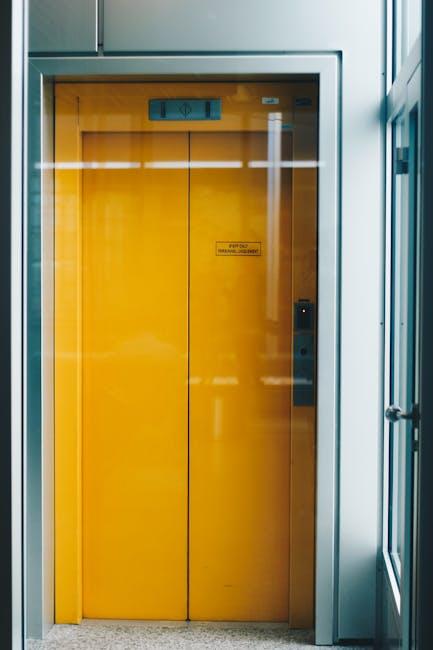In an age where convenience meets security, the traditional clink of metal keys is gradually fading into a whisper of the past. Offices, once guarded by sturdy locks and jangling keyrings, are experiencing a silent revolution-one coded in digits and powered by smart technology. But when exactly is the right time to trade in your keyed locks for sleek keyless entry systems? Whether driven by evolving security needs, employee dynamics, or the allure of tech-savvy innovation, upgrading your office locks is more than just a hardware switch-it’s a strategic move that can redefine access, efficiency, and peace of mind. This article explores the pivotal moments and practical signs that signal it’s time to step into the future of office security.
Table of Contents
- Signs Your Traditional Locks Are Holding Back Security
- How Keyless Entry Enhances Office Access Control
- Evaluating Cost Benefits Versus Upgrade Investment
- Choosing the Right Keyless System for Your Office Needs
- Planning a Seamless Transition to Keyless Entry
- Q&A
- Closing Remarks

Signs Your Traditional Locks Are Holding Back Security
Traditional locks, while once a reliable security measure, often reveal their limitations in today’s fast-paced business environments. If you find yourself frequently juggling multiple keys or experiencing difficulty tracking who has access, it’s a crystal-clear signal that your current locking system might be compromising your office’s safety standards. Another glaring issue emerges when locks show signs of wear or damage, making them easier targets for tampering or break-ins.
Additionally, outdated locks do not offer the flexibility that modern offices demand. For instance, managing access for temporary employees or visitors becomes a logistical headache without digital control. Below is a quick snapshot of common warning signs that indicate your mechanical locks are falling short:
- Lost or stolen keys creating security gaps
- Inefficient access control with multiple keyholders
- Difficulty in updating or changing locks regularly
- Recurring lockouts or mechanical failures
- No activity logs or monitoring capabilities

How Keyless Entry Enhances Office Access Control
Gone are the days of fumbling through pockets or searching bags for office keys. Upgrading to keyless entry systems transforms traditional access by offering seamless entry through PIN codes, biometric scans, or mobile credentials. This transition not only simplifies the daily routines of employees but also enhances overall security by eliminating the risks of lost or duplicated keys. Businesses gain the ability to manage access privileges instantly and remotely, enabling quick responses to staffing changes without the hassle of rekeying.
The flexibility of keyless systems extends beyond convenience to empower security administrators with detailed activity logs and automated alerts. Offices can benefit from features like:
- Customizable access schedules to restrict entry during non-working hours
- Temporary codes for visitors or contractors
- Multi-factor authentication options for sensitive areas
These capabilities foster a secure environment tailored to your organization’s unique needs, streamlining facility management with modern efficiency.

Evaluating Cost Benefits Versus Upgrade Investment
When considering the shift to keyless entry systems, it’s essential to weigh the upfront costs against the long-term savings and operational efficiencies. Initial investment often includes purchasing smart locks, installation fees, and software subscriptions. While these may seem substantial compared to traditional lock and key setups, businesses often recoup these expenses through reduced costs associated with key management, rekeying, and emergency lockouts. Additionally, the enhanced security and ease of access management can prevent costly breaches and downtime, translating into indirect but significant savings.
To clarify, here’s a quick comparison of ongoing cost factors before and after upgrading:
| Cost Factor | Traditional Locks | Keyless Entry |
|---|---|---|
| Key Duplication | Frequent and expensive | Not required |
| Rekeying | Necessary after lost keys | Managed via software remotely |
| Emergency Lockouts | High locksmith fees | Instant access via app or code |
| Access Control Updates | Manual rekey or key replacement | Instant and flexible updates |
Ultimately, organizations must consider how much they value security flexibility and operational convenience when analyzing these costs. For companies with growing teams or changing access needs, the investment may pay off faster, making keyless entry an astute upgrade choice that evolves with the office.

Choosing the Right Keyless System for Your Office Needs
Selecting the perfect keyless entry system for your office requires balancing security, convenience, and budget. Consider the volume of daily users and the level of access control your business demands. For instance, if you have a large team with varying access rights, systems with customizable access codes or RFID integration can streamline entry management. On the other hand, smaller offices might benefit more from simple keypad systems that offer quick installation and basic tracking capabilities. Compatibility with existing door hardware and ease of use should also factor heavily into your decision-making process.
Exploring various technologies can help you narrow down your choices effectively. The table below summarizes common keyless system types along with their standout features and ideal office scenarios:
| System Type | Key Features | Best For |
|---|---|---|
| Keypad | PIN codes, simple setup, cost-effective | Small offices, low traffic |
| RFID Card | Swipe access, durable, scalable | Medium to large teams, frequent visitors |
| Biometric | Fingerprint/face recognition, high security | High-security environments |
| Mobile App | Remote access, activity logs, integration | Tech-savvy teams, flexible access control |
- Assess office layout: Multiple entry points may need synchronized systems.
- Consider future growth: Choose a scalable option to accommodate expansion.
- Prioritize user experience: Ensure the system is intuitive for all employees.
- Evaluate support and warranties: Reliable customer service matters long-term.

Planning a Seamless Transition to Keyless Entry
Successfully migrating from traditional locks to a keyless entry system involves meticulous preparation to ensure minimal disruption. Begin by conducting a thorough security audit to identify high-priority access points. Collaborate with your team to determine usage patterns and access needs, ensuring that the new system accommodates every role efficiently. Additionally, factor in staff training and clear communication about the forthcoming changes to foster smooth adaptation and eliminate confusion. Incorporate contingency plans that address potential technical challenges during the rollout, such as backup access options and prompt support channels.
Key considerations for a smooth upgrade include:
- Compatibility checks with existing security infrastructure
- Integration capabilities with current access management software
- Customization options for varied user permissions
- Battery life and system maintenance requirements
- Scalability for future expansions or policy changes
| Transition Phase | Key Actions | Expected Outcome |
|---|---|---|
| Assessment | Security audit & user survey | Clear upgrade roadmap |
| Installation | Hardware setup & software configuration | Functional access system |
| Training | Staff workshops & materials distribution | Confident user base |
| Evaluation | Feedback collection & system fine-tuning | Optimized security and usability |
Q&A
Q&A:
Q1: What exactly is keyless entry for office locks?
A1: Keyless entry systems replace traditional mechanical locks with electronic access controls. Instead of a physical key, employees use codes, cards, smartphones, or biometric identifiers to unlock doors, offering a modern, secure, and convenient access method.
Q2: How do I know if it’s time to upgrade my office locks to keyless entry?
A2: Consider upgrading when you experience frequent lost keys, want to control who enters your premises more precisely, or aim to improve security after thefts or breaches. If managing physical keys has become a logistical headache or you’re expanding your team, the shift to keyless entry can streamline access.
Q3: Can keyless entry improve office security?
A3: Absolutely. Keyless systems allow you to customize access permissions for different employees, track entry logs for accountability, and remotely revoke or grant access instantly-something impossible with traditional keys. This granularity enhances overall security and reduces risks.
Q4: What are the benefits of switching beyond security?
A4: Aside from enhanced protection, keyless entry boosts convenience. No more fumbling for keys, issuing replacements, or worrying about who has copies. It can integrate with other systems like alarms or employee schedules, automating access based on time or role.
Q5: Are there any downsides or challenges when upgrading?
A5: Transitioning to keyless entry requires upfront investment in hardware and possible software subscriptions. Employees need a brief learning curve, and you must ensure backup access options to prevent lockouts during power outages or technical glitches.
Q6: How does keyless entry support flexible or remote work environments?
A6: With remote management capabilities, administrators can control access from anywhere. Temporary workers or cleaning staff can get timed or limited access without physical keys, facilitating flexible scheduling and ensuring the office remains secure at all times.
Q7: What features should I look for in a keyless entry system?
A7: Seek systems with robust encryption, easy integration with your existing infrastructure, mobile app compatibility, audit trails, and user-friendly management portals. Biometric options add an extra layer of security, while cloud connectivity enables seamless updates and remote control.
Q8: Can smaller offices benefit from keyless entry, or is it just for large companies?
A8: Keyless entry isn’t just for big corporations. Even small offices benefit from simplified access control, reduced costs over time, and improved security. Scalable systems mean you can start small and expand features as your needs grow.
Q9: How do I begin upgrading my office locks to keyless entry?
A9: Start by assessing your current security challenges and access needs. Consult with a professional locksmith or security provider to explore compatible options, request demos, and create a tailored plan that fits your office size, budget, and workflow.
Q10: What’s the future of office security with keyless entry?
A10: The future leans toward smarter, more integrated systems-think AI-driven access controls, facial recognition, and biometric authentication blended with IoT devices. Upgrading now prepares your office to embrace these innovations, keeping security ahead of evolving challenges.
Closing Remarks
As technology continues to evolve, so do our expectations for security and convenience in the workplace. Knowing when to upgrade your office locks to keyless entry is not just about keeping up with trends-it’s about embracing a smarter, more efficient way to protect what matters most. Whether you’re aiming to enhance security, simplify access control, or future-proof your office, the shift to keyless entry could be the key to unlocking peace of mind. Take the time to assess your current system, consider your unique needs, and step confidently into a safer, more accessible workspace. After all, sometimes the best way forward is to leave the old keys behind.




